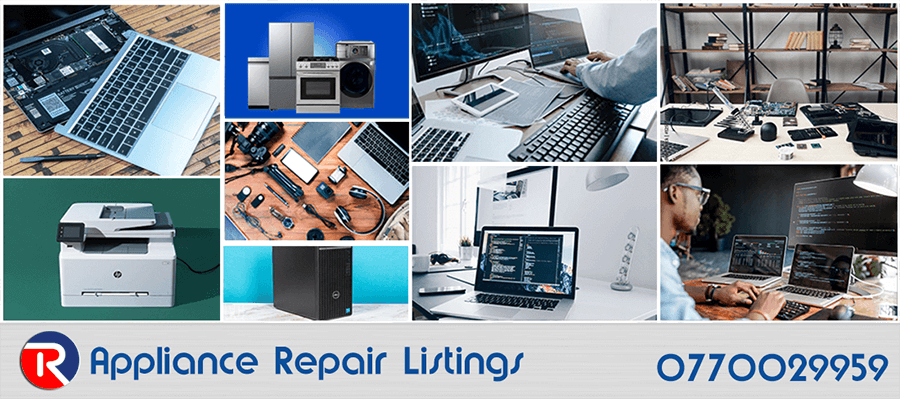
How to Fix a Laptop That Keeps Freezing or Crashing
By Repair.co.ke
A laptop that frequently freezes or crashes can disrupt productivity and cause frustration. These issues may stem from software conflicts, hardware malfunctions, or insufficient system resources. This article provides a structured approach to diagnosing and resolving laptop freezing or crashing problems, ensuring optimal performance. Follow these steps to troubleshoot and restore your device’s functionality.
Step 1: Restart Your Laptop
A simple restart can resolve many temporary software glitches. When a laptop freezes, programs or processes may consume excessive resources, causing the system to become unresponsive. To restart, press and hold the power button for 10–20 seconds to perform a hard reboot if the screen is unresponsive. After restarting, monitor the laptop’s performance to determine if the issue persists.
Step 2: Check for Overheating
Overheating is a common cause of laptop crashes. Dust accumulation in cooling fans or vents can obstruct airflow, leading to elevated temperatures. To address this:
- Clean the vents: Use compressed air to remove dust from the laptop’s vents and fan.
- Use a cooling pad: A cooling pad can improve airflow and reduce heat during extended use.
- Monitor temperatures: Install software like HWMonitor to check CPU and GPU temperatures. If temperatures exceed 85°C, professional cleaning or thermal paste replacement may be required.
Ensure the laptop is placed on a hard, flat surface to allow proper ventilation.
Step 3: Update Software and Drivers
Outdated software or drivers can cause compatibility issues, leading to freezes or crashes. To update your system:
- Operating System: For Windows, navigate to Settings > Update & Security > Windows Update and install pending updates. For macOS, go to System Preferences > Software Update.
- Drivers: Use Device Manager (Windows) or the manufacturer’s website to update graphics, audio, and network drivers. Tools like Driver Booster can automate this process.
- Applications: Ensure all installed programs are up to date to prevent conflicts.
Restart the laptop after updates to apply changes.
Step 4: Scan for Malware
Malware can consume system resources, causing instability. Use reputable antivirus software such as Windows Defender, Malwarebytes, or Bitdefender to perform a full system scan. If threats are detected, follow the software’s instructions to quarantine or remove them. To prevent future infections, avoid downloading files from untrusted sources and enable real-time protection.
Step 5: Free Up Disk Space
A nearly full hard drive can slow down your laptop and cause crashes. To free up space:
- Delete unnecessary files: Remove temporary files, old downloads, and unused applications.
- Use Disk Cleanup (Windows): Access this tool by searching “Disk Cleanup” in the Start menu and select files to delete.
- Manage storage (macOS): Go to About This Mac > Storage > Manage to optimize space.
Aim to keep at least 15–20% of your drive free for optimal performance.
Step 6: Check RAM and Hardware
Insufficient or faulty RAM can lead to system instability. To diagnose:
- Check RAM usage: Open Task Manager (Windows) or Activity Monitor (macOS) to monitor memory usage. If RAM is consistently maxed out, consider upgrading.
- Run diagnostics: Use Windows Memory Diagnostic or Apple Diagnostics to test for RAM issues. If errors are detected, replace the faulty module.
- Inspect hardware: Loose or failing components, such as the hard drive or battery, may cause crashes. Consult a professional technician for hardware inspections.
Step 7: Adjust Power Settings
Incorrect power settings can cause performance issues, especially on laptops running on battery. For Windows, go to Control Panel > Power Options and select the “High Performance” plan. For macOS, adjust Energy Saver settings in System Preferences to prioritize performance. Ensure the laptop is plugged in during resource-intensive tasks.
Step 8: Reinstall the Operating System
If the above steps fail, a corrupted operating system may be the culprit. Back up all important data, then reinstall Windows or macOS using a bootable USB drive or recovery partition. Follow the manufacturer’s instructions for a clean installation. After reinstalling, update the system and install only essential software to avoid conflicts.
When to Seek Professional Help
If your laptop continues to freeze or crash after troubleshooting, hardware issues like a failing motherboard or hard drive may be responsible. Contact a certified repair service, such as Repair.co.ke, for expert diagnosis and repair. Professional technicians can perform advanced diagnostics and replace defective components, ensuring long-term reliability.
A freezing or crashing laptop can often be fixed with systematic troubleshooting. By addressing software updates, malware, overheating, and hardware issues, you can restore your device’s performance. Regular maintenance, such as cleaning vents and updating software, can prevent future problems. For persistent issues, trust Repair.co.ke to provide professional solutions tailored to your laptop’s needs.